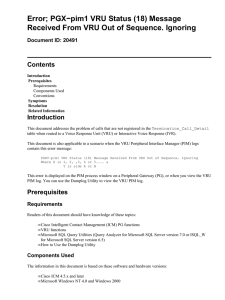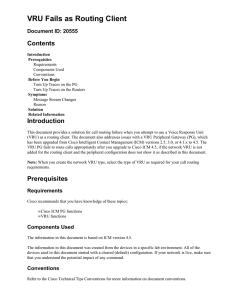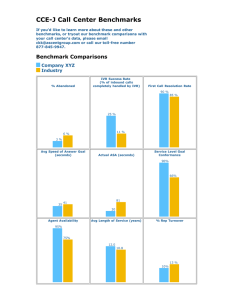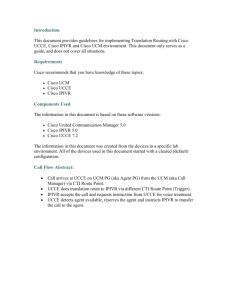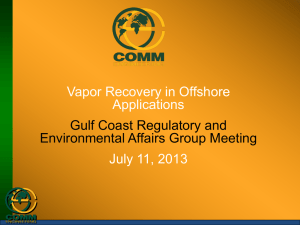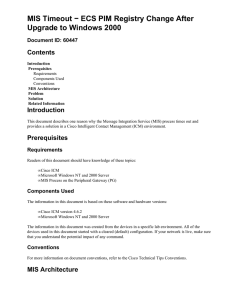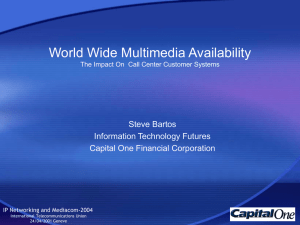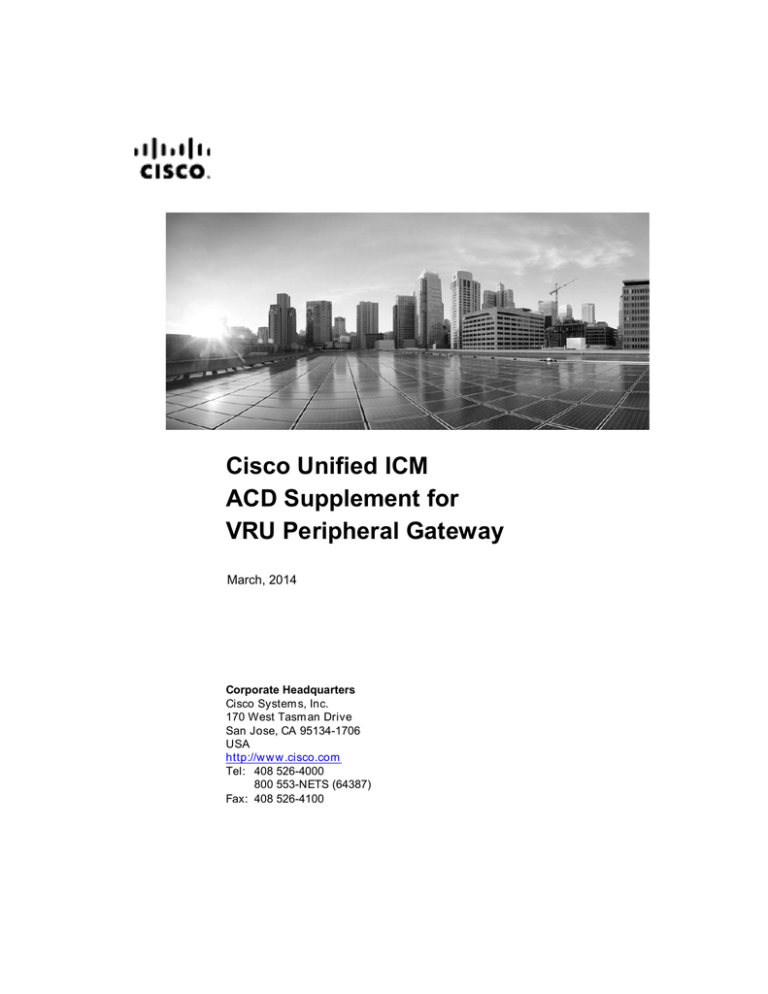
Cisco Unified ICM
ACD Supplement for
VRU Peripheral Gateway
March, 2014
Corporate Headquarters
Cisco System s, Inc.
170 West Tasm an Drive
San Jose, CA 95134-1706
USA
http://w w w .cisco.com
Tel: 408 526-4000
800 553-NETS (64387)
Fax: 408 526-4100
T THE SPECIFICATIONS AND INFORMATION REGARDING THE PRODUCTS IN THIS MANUAL ARE SUBJECT TO CHANGE WITHOUT
NOTICE. ALL STATEMENTS, INFORMATION, AND RECOMMENDATIONS IN THIS MANUAL ARE BELIEVED TO BE ACCURATE BUT ARE
PRESENTED WITHOUT WARRANTY OF ANY KIND, EXPRESS OR IMPLIED. USERS MUST TAKE FULL RESPONSIBILITY FOR THEIR
APPLICATION OF ANY PRODUCTS.
THE SOFTWARE LICENSE AND LIMITED WARRANTY FOR THE ACCOMPANYING PRODUCT ARE SET FORTH IN THE INFORMATION
PACKET THAT SHIPPED WITH THE PRODUCT AND ARE INCORPORATED HEREIN BY THIS REFERENCE. IF YOU ARE UNABLE TO
LOCATE THE SOFTWARE LICENSE OR LIMITED WARRANTY, CONTACT YOUR CISCO REPRESENTATIVE FOR A COPY.
The Cisco implementation of TCP header compression is an adaptation of a program developed by the University of California, Berkeley (UCB)
as part of UCBs public domain version of the UNIX operating system. All rights reserved. Copyright 1981, Regents of the University of California.
NOTWITHSTANDING ANY OTHER WARRANTY HEREIN, ALL DOCUMENT FILES AND SOFTWARE OF THESE SUPPLIERS ARE
PROVIDED "AS IS" WITH ALL FAULTS. CISCO AND THE ABOVE-NAMED SUPPLIERS DISCLAIM ALL WARRANTIES, EXPRESSED OR
IMPLIED, INCLUDING, WITHOUT LIMITATION, THOSE OF MERCHANTABILITY, FITNESS FOR A PARTICULAR PURPOSE AND
NONINFRINGEMENT OR ARISING FROM A COURSE OF DEALING, USAGE, OR TRADE PRACTICE.
IN NO EVENT SHALL CISCO OR ITS SUPPLIERS BE LIABLE FOR ANY INDIRECT, SPECIAL, CONSEQUENTIAL, OR INCIDENTAL
DAMAGES, INCLUDING, WITHOUT LIMITATION, LOST PROFITS OR LOSS OR DAMAGE TO DATA ARISING OUT OF THE USE OR
INABILITY TO USE THIS MANUAL, EVEN IF CISCO OR ITS SUPPLIERS HAVE BEEN ADVISED OF THE POSSIBILITY OF SUCH
DAMAGES.
Cisco and the Cisco logo are trademarks or registered trademarks of Cisco and/or its affiliates in the U.S. and other countries. To view a list of
Cisco trademarks, go to this URL: www.cisco.com/go/trademarks. Third-party trademarks mentioned are the property of their respective owners.
The use of the word partner does not imply a partnership relationship between Cisco and any other company. (1110R)
Copyright 2012-2013 Cisco Systems, Inc. All rights reserved.
.
Contents
Preface........................................................................................... vi
1. Overview ................................................................................... 9
1.1. ICM/VRU Configuration ........................................................................ 10
1.2. VRU Interface Requirements ............................................................... 10
1.3. Hardware and Software Requirements .............................................. 10
1.4. Supported Unified ICM Features ......................................................... 11
1.5. Unsupported Unified ICM Features .................................................... 11
2. VRU Service Control Interface .............................................. 13
3. VRU Time Synchronization Interface.................................... 15
4. Older VRU Interface Features ............................................... 17
4.1. Event Data Feed .................................................................................... 18
4.2. Call Routing Interface .......................................................................... 18
4.3. Mixing SCI and EDF .............................................................................. 18
5. VRU PG Installation Options ................................................. 19
5.1. Installation Options .............................................................................. 20
5.2. MIS Enabled checkbox......................................................................... 20
5.3. VRU Reporting controls ....................................................................... 20
5.3.1. Event Feed choice ..................................................................... 21
5.3.2. Service Control choice ............................................................... 21
6. Unified ICM Configuration ..................................................... 23
6.1. Peripheral .............................................................................................. 24
iv
6.2. Peripheral Targets ................................................................................ 24
6.2.1. Event Feed VRUs ...................................................................... 24
6.2.2. Call Routing VRUs ..................................................................... 25
6.3. Trunk Groups ........................................................................................ 25
6.4. Trunks .................................................................................................... 25
6.5. Services ................................................................................................. 25
6.6. Translation Routes ............................................................................... 25
6.7. Routes.................................................................................................... 25
6.8. Routing Client ....................................................................................... 25
6.9. Labels .................................................................................................... 26
6.10. Network Trunk Groups ....................................................................... 26
6.11. Service Arrays .................................................................................... 27
6.12. Maintaining Your Configuration ........................................................ 27
7. VRU Programming Considerations ...................................... 29
7.1. VRU Script Timeout .............................................................................. 30
7.2. Translation Routing .............................................................................. 30
7.2.1. SCI 30
7.2.2. CRI with EDF ............................................................................. 30
7.2.3. CRI without EDF ........................................................................ 31
Index .................................................................................... Index-1
iv
v
Figures
Figure 1: Configuration ......................................................................................... 10
Figure 2: Installation Options ............................................................................... 20
Figure 3: Network Trunk Groups .......................................................................... 26
v
v
vi
Preface
Preface
Purpose
This document provides configuration information specific to the VRU
Peripheral Gateway (PG). The VRU PG implements the Unified
ICM/VRU Interface Protocol (here after called VRU Interface). The VRU
PG allows Cisco Systems, end users, VRU vendors, and other parties to
integrate various telephony devices (here after called VRU) into Unified
ICM. It is not within the scope of this document to address the specifics of
any particular VRU that was integrated. This document provides
information that may be generally applied to any VRU connected to
Unified ICM through the VRU PG.
Audience
This document is intended for system managers. The reader should
understand Unified ICM functions as described in the Installation and
Setup Guide for Cisco Unified ICM/Contact Center Enterprise & Hosted,
Configuration Guide for Cisco Unified ICM/Contact Center Enterprise &
Hosted, and Scripting and Media Routing Guide for Cisco Unified
ICM/Contact Center Enterprise & Hosted. The reader is also assumed to
have specific knowledge of the VRU Interface, as well as specific
knowledge about one or more VRU Interface implementations.
Organization
Chapter 1, “Overview”
Provides an overview of the VRU interface, software and hardware
requirements.
Chapter 2, “VRU Service Control Interface”
Describes the Service Control Interface that is used to control a VRU.
Chapter 3, “Time Synchronization Interface”
Describes how the VRU can use the TSI to synchronize its internal
clock with the VRU PG.
Chapter 4, “Old Interfaces of VRU”
Describes some of the older interfaces of the VRU.
Chapter 5, “VRU PG Installation Options”
Describes the installation options of the VRU PG.
Chapter 6, “Unified ICM VRU Configuration”
Describes the configuration details of the Unified ICM and the VRU
PG.
vi
vii
Preface
Chapter 7, “VRU Programming Considerations”
Describes the programming considerations for the VRU PG.
Typographic Conventions
This manual uses the following conventions:
Boldface type is used for emphasis; for example:
Real-time information is not stored in the central database.
Italic type indicates one of the following:
A newly introduced term; for example:
A skill group is a collection of agents who share similar skills.
A generic syntax item that you must replace with a specific value;
for example:
IF (condition, true-value, false-value)
A title of a publication; for example:
For more information see the Installation and Setup Guide for
Cisco Unified ICM/Contact Center Enterprise & Hosted.
Sans serif type with small caps is used to represent keys on your
keyboard; for example:
Press the Shift key to select a range of items.
An arrow () indicates an item from a pull-down menu. For example,
the Save command from the File menu is referenced as FileSave.
Other Publications
For more information on Unified ICM, see the following documents:
Administration Guide for Cisco Unified ICM/Contact Center
Enterprise & Hosted
Installation and Setup Guide for Cisco Unified ICM/Contact Center
Enterprise & Hosted
Configuration Guide for Cisco Unified ICM/Contact Center
Enterprise & Hosted
Scripting and Media Routing Guide for Cisco Unified ICM/Contact
Center Enterprise & Hosted
For information on Cisco Network Applications Manager (NAM), see the
following documents:
Product Description Guide for Cisco Unified ICM Hosted
Setup and Configuration Guide for Cisco Unified ICM Hosted Edition
Multiple-NAM Setup and Configuration Guide for Cisco Unified ICM
Hosted
vii
vii
viii
Preface
Obtaining Documentation, Obtaining Support, and Security
Guidelines
For information on obtaining documentation, obtaining support, security
guidelines, and also recommended aliases and general Cisco documents,
see the monthly What's New in Cisco Product Documentation, which also
lists all new and revised Cisco technical documentation, at:
http://www.cisco.com/en/US/docs/general/whatsnew/whatsnew.html
Documentation Feedback
You can provide comments about this document by sending email to the
following address: ccbu_docfeedback@cisco.com
We appreciate your comments.
viii
9
1. Overview
The VRU PG connects to each VRU via a TCP/IP connection. The VRU
PG can run in simplex or duplex configurations.
In a duplex configuration, only the active side of the PG connects to the
VRU. If the active side of a duplexed PG fails, the inactive side is
activated, and a new connection to the VRU opens.
10
Overview
1.1. ICM/VRU Configuration
The typical configuration consists of a VRU system and a PG (or two PG’s
if duplexed) on an Ethernet hub. Each VRU PG is capable of connecting
32 VRUs simultaneously.
10 Base-T
Ethernet Hub
PG A
VRU
PG B
Figure 1: Configuration
Note: Bandwidth to the Central Controller is sufficient to support the number of
VRUs connected. Contact your Cisco representative for a network
analysis.
1.2. VRU Interface Requirements
The VRU PG requires a TCP/IP connection to the VRU. The VRU must
provide an IP address and a TCP port number for the PG to connect to.
The VRU must implement the required interface defined in the document
Cisco Unified ICM/VRU Interface Specification.
1.3. Hardware and Software Requirements
The VRU PG requires a 10-Megabit Ethernet or equivalent physical
connection to the VRU. The VRU PG can communicate remotely with
VRUs via a TCP/IP network. However, you must ensure that the network
link between the PG and VRU system has the bandwidth to support the
call load for VRU.
10
Unsupported Unified
11 ICM Features
1.4. Supported Unified ICM Features
The VRU PG supports the following Unified ICM features:
Pre-Routing
Post-Routing
Translation Routing
Peripheral, Trunk Group and Service real time reporting
Duplexed PG implementation
1.5. Unsupported Unified ICM Features
The VRU PG does not support features pertaining to Agents or Call
Queuing. An SCI VRU allows the CallRouter to implement call queues
without implementing the queues.
11
11
12
12
Overview
13
2. VRU Service Control
Interface
A CallRouter uses the Service Control Interface (SCI) to control a VRU.
The CallRouter can have the VRU play announcements and prompts,
gather data from the caller, and route calls to destinations. This interface is
required for in-network VRUs and for global call queues implemented in
the CallRouter.
Because SCI allows the CallRouter to control the VRU, the CallRouter
needs to know the capabilities and configuration of the VRU. This is
encoded in a number called the VRU Type configured in the Router
settings. See the "Network VRUs" chapter of the Scripting and Media
Routing Guide for Cisco Unified ICM/Contact Center Enterprise &
Hosted for details on choosing and configuring the VRU Type for different
applications.
14
14
VRU Service Control Interface
15
3. VRU Time Synchronization
Interface
The VRU can use the Time Synchonization Interface (TSI) to synchronize
its internal clock with VRU PG clock, which is synchronized to the
Unified ICM clock. As certain messages arrive from the VRU, the VRU
PG compares VRU time stamp with Unified ICM time. Significant
differences are periodically reported to the VRU via the TSI.
The messages that contain the current VRU time:
SCI:
INIT_SERVICE_CONTROL_VRU, VRU_STATUS
EDF:
INIT_DATA_END_EVENT, VRU_STATUS_EVENT
Warning: The Time Synchronization Interface should not be used on any
VRU which is connected to a PG and is being used as Unified ICM Time
Source (Router registry key "Router \ CurrentVersion \ Configuration \
Time \ Source"). This can cause a time feedback loop that can result in
system time to fluctuate.
16
16
VRU Time Synchronization Interface
17
4. Older VRU Interface
Features
The Service Control Interface feature replaces several earlier interface
features that are still supported for backward compatibility with the
following older VRUs:
Event Data Feed (EDF)
Call Routing Interface (CRI)
18
Older VRU Interface Features
4.1. Event Data Feed
The VRU uses EDF feature to provide real-time events to Unified ICM.
Unified ICM will accumulate call time statistics and write Termination
Call Detail records for each call.
4.2. Call Routing Interface
The VRU uses CRI feature to send route requests to the CallRouter. Each
route request triggers a routing script, which returns a route response.
Typically, the route response is to direct the call to a new destination.
However, the script triggered by the route request can perform any
decision-making or data-gathering task (such as a database lookup) and
return the result in a route response. You can use this as a standalone
interface. However, this is generally used in conjunction with the EDF .
4.3. Mixing SCI and EDF
A VRU can support both SCI and EDF. This capability is provided as a
migration path from legacy EDF applications to SCI. The VRU can deliver
some calls under EDF (send a "delivered" event) and the others under SCI
(send a "New Call" or "Request Instruction" message). If the VRU is not
able to determine which mode to use based on data available when the call
is delivered, it must start the call under EDF (send a "delivered" event) and
later use SCI "New Dialogue" message to convert EDF call to an SCI
dialogue.
18
19
5. VRU PG Installation Options
This chapter describes the options available during the installation of a
VRU PG.
20
VRU PG Installation Options
5.1. Installation Options
Following are the installation options available in the VRU PG:
Figure 2: Installation Options
5.2. MIS Enabled checkbox
MIS is used to transfer the call variables between an ACD and associated
EDF/CRI VRU. Check the box to use MIS.
5.3. VRU Reporting controls
Select one of the two options:
Event Feed
Service Control
Note: The names of these two options do not directly correspondence to the
VRU Interface features of similar name. The features that the VRU can
support are restricted by the choice. But within those restrictions, the
combination of features that the VRU chooses to support are left to the
VRU and are received from the VRU when the VRU PG connects to it.
20
VRU Reporting
controls
21
21
5.3.1. Event Feed choice
If this option is selected, VRU PG will not generate real-time trunk, update
service data and write Ternimation Call Detail records for every SCI
dialogue. VRU PG still generates real-time peripheral data update. If the
Service Control Interface is used as a standalone, VRU peripheral data is
initialized based on the Init_Service_Ctrl_VRU message during the SCI
initialization. If Service Control Interface is used along with EDF
interface, VRU peripheral data is initialized by messages in EDF interface.
5.3.2. Service Control choice
Selecting this option allows the VRU PG to generate real-time peripheral,
trunk and service data update, and write one or more Termination Call
Detail records for each SCI dialogue. For Service Control Interface, VRU
peripheral data is always initialized based on Init_Service_Ctrl_VRU
message during the SCI initialization, even if Service Control Interface is
used alone, or combined with other interface.
Selecting this option also enables the Queue Reporting checkbox.
Queue Reporting checkbox
If this box is unchecked, the only events generated for SCI dialogues are
Delivered and Cleared, and the only call statistic calculated is total call
time.
If this box is checked, the PG will generate Queue events. Calculated call
statistics will include queue times and abandons in-queue time, and total
call time.
21
22
22
VRU PG Installation Options
23
6. Unified ICM Configuration
In Unified ICM terms, the VRU itself corresponds to a peripheral. Unified
ICM treats all contact center devices (e.g., ACDs, PBXs, IVR systems) as
peripherals.
To properly configure and maintain Unified ICM database, you need to
understand the relationship between the objects configured in the VRU,
and the Unified ICM database, relationship of the field in the VRU
message, and the attribute of objects in Unified ICM database.
Some mappings are described in this chapter. For example, a Unified ICM
Trunk Group Peripheral Number corresponds to the Trunk Group ID value
in the VRU messages.
Note: Different VRU vendors may use different object names; refer to
the document from the VRU vendor for detailed object mapping. This
chapter also provides information specific to configuring a VRU PG using
the Configuration Manager's PG Explorer tool.
24
Unified ICM Configuration
6.1. Peripheral
The Unified ICM Peripheral corresponds to the VRU. The following
values can be used in any combination in the Peripheral Configuration
Parameter for the Peripherals configured with the VRU PG:
"/BTTELSIS": Send a single-byte pad message, after any message
with odd length is sent to the VRU, and read a single-byte message,
after any message with odd length is received from the VRU. The
default action is to block or read pad messages.
"/ZEROTRUNKS": Tell the Unified ICM to set the available trunk
count to zero if the VRU PG goes out of service.
"/FILTERVARS": Send only the call variables changed by Unified
ICM to the VRU, since the last time the call variables were sent to or
received from the VRU. The default action is to send all non-null call
variables to the VRU.
"/ASSUME_ANSWERED": Count calls as successfully connected
as soon as the Connect message is sent to the VRU. This will prevent
calls from being counted as abandoned when a VRU fails to send an
Event Report / Answered message in response to a Connect message.
"/TYPE_3_TALK_TIME ": This value is used to support customers
who might be relying on the old behavior that when Service Control
Queue Reporting is enabled, VRUPIM treat the call arrived at Type3
or Type 7 VRU for self-service as in Talking state and the TalkTime in
TCD is the time the call spent at VRU. The new behavior is to treat
calls arriving at Type 3 and Type 7 VRUs the same as Type 2 and
Type 8 VRUs and the TalkTime in TCD is not incremented for selfservice call at VRU when Service Control Queue Reporting is enabled.
6.2. Peripheral Targets
A Peripheral Target is a network target identified by a Trunk Group and
DNIS that terminates on the VRU. For EDF, a Peripheral Target must be
configured for all DNIS and Trunk Group(s) through which an incoming
call arrives. Peripheral Targets used for Translation Routes can be most
easily built with the Translation Route Wizard.
6.2.1. Event Feed VRUs
All Trunk Group/DNIS combinations that are in any way connected with
the handling of any incoming VRU call should be configured in the
Unified ICM as a Peripheral Target to ensure complete call monitoring.
Those calls that do not map to a valid Peripheral Target are associated with
the Service defined in the Delivered or Originated call event. If neither
mapping fits, the call is associated with the Peripheral’s Default Route as
defined in the Peripheral Configuration Table. If a Default Route is not
defined, the PG will log an event.
24
25 Routing Client
The OPC Registry variable “MapPeripheralTargetsWithoutTrunkGroup”
must be set to the default value of zero for Event Data Feed VRUs.
6.2.2. Call Routing VRUs
Configuration of all Trunk Group/DNIS combinations as Peripheral
Targets is not essential. However, Peripheral Targets necessary for Post
Routing / Translation Routing must still be configured.
The OPC Registry variable “MapPeripheralTargetsWithoutTrunkGroup”
must be changed to 1 for Call Routing-only VRUs.
6.3. Trunk Groups
The Trunk Group Peripheral Number corresponds to the Trunk Group ID
value in VRU messages. No special configuration information is required
for Trunk Groups for the VRU PG. The trunk count is obtained
dynamically from the VRU and should not be configured. The VRU PG
does not use the Trunk Group Extension.
6.4. Trunks
Incoming calls are identified according to the individual trunk or port that
the call occupies. However, there is no need to configure individual trunks
in Unified ICM; the identification of trunks is handled automatically by
the VRU and the VRU PG.
6.5. Services
The Service Peripheral Number corresponds to the Service ID value in
VRU messages.
6.6. Translation Routes
No special configuration considerations apply.
6.7. Routes
A Route is one or more Peripheral Targets. A Peripheral Target is a
network target identified by a Trunk Group and DNIS that terminates on
the VRU. A Peripheral Target is equivalent to the combination of DNIS
and the Trunk Group(s) through which the incoming calls arrive.
6.8. Routing Client
The VRU PG supports post routing and can therefore be considered a
Routing Client. To configure a Routing Client for the VRU, select the
VRU Peripheral's "Routing Client" Tab in PG Explorer and set the Client
Type to "VRU" through Configuration Manager.
25
25
26
Unified ICM Configuration
6.9. Labels
The format of label strings sent to the VRU in a Route Select, Connect,
Temporary Connect, or Connect-to-Resource message is not dictated by
the Unified ICM. The VRU is responsible for interpreting the label and
acting upon it; this interpretation may vary from one VRU implementation
to another.
For labels of type BUSY, RING, and DEFAULT the label type configured
in the Unified ICM is passed to the VRU in Route Select and Connect
messages. Other label types are marked as type NORMAL. The VRU may
use the label type (where available), in addition to the label itself, to
determine how to process the response.
6.10. Network Trunk Groups
Unified ICM supports a configuration in which several VRUs share a
single Network Trunk Group. In this configuration, the physical VRUs
combine to give the appearance of a single “virtual” VRU with increased
capacity. Since the network can deliver a call on any trunk in the Network
Trunk Group, the call may arrive on any of the VRUs sharing the Network
Trunk Group. For this reason, all the VRUs sharing the Network Trunk
Group should perform identical call processing.
VRU 1
Trunk Group
VRU 1
VRU 2
Trunk Group
Network Trunk Group
Network
VRU 2
VRU 3
Trunk Group
VRU 3
"Virtual" VRU
Figure 3: Network Trunk Groups
Configure one Network Trunk Group for the “virtual” VRU. Then, for
each physical VRU, configure the Trunk Group(s) on that peripheral. Set
the Network Trunk Group for each peripheral Trunk Group to be the
Network Trunk Group for the “virtual” VRU.
Note that all Peripheral Targets associated with any of the VRUs are
defined in terms of the Network Trunk Group. It is therefore not possible
26
Maintaining Your
27 Configuration
27
to route calls to an individual VRU in this configuration. Calls may be
routed to the “virtual” VRU; you cannot predict which physical VRU will
actually receive the call. Monitoring of call activity on either the “virtual”
VRU or any of the physical VRUs can be done by examining the data for
the Network Trunk Group or the peripheral Trunk Group, respectively.
All physical VRUs that comprise a “virtual” VRU must be connected to
the same VRU PG.
6.11. Service Arrays
A Service Array is similar to a Network Trunk Group but aggregates
Services instead of Trunk Groups.
In a “virtual” VRU, each physical VRU must be configured and
programmed to perform the same call processing. This implies that each
physical VRU must have the same Service(s) configured. However,
because of the shared Network Trunk Group, the Unified ICM cannot
target a call for a Service on a specific VRU within a “virtual” VRU.
Instead, a Service Array is used for this purpose. A Service Array defines a
“virtual” Service on a “virtual” VRU, and may be used as a Skill Target in
a Unified ICM routing script.
To configure a Service Array:
1. Configure a Service for every physical VRU in the “virtual” VRU.
2. Create a Service Array.
3. Add the Services configured for the physical VRUs as members of the
Service Array.
Note: It is required to have one Service from each VRU in the
“virtual” VRU that is a member of the Service Array.
For example, suppose the 3 VRUs in the diagram above can service
“Sales” callers and “TechSupport” callers. Six services would be
configured; for example: VRU_1.Sales, VRU_2.Sales, VRU_3.Sales,
VRU_1.TechSupport, VRU_2.TechSupport, and VRU_3.TechSupport.
Then, two Service Arrays would be configured; for example: VRUSales
and VRUTechSupport. VRUSales would include VRU_1.Sales,
VRU_2.Sales, and VRU_3.Sales as members. VRUTechSupport would
include VRU_1.TechSupport, VRU_2.TechSupport, and
VRU_3.TechSupport as members.
6.12. Maintaining Your Configuration
It is preferred that changes made to your configuration be accomplished
first on the VRU, then on the Unified ICM Configuration. This will ensure
that the PG sees the configuration updates on the VRU systems.
27
28
28
Unified ICM Configuration
29
7. VRU Programming
Considerations
This chapter describes the programming considerations for the VRU
environment.
30
VRU Programming Considerations
7.1. VRU Script Timeout
When the CallRouter encounters a Run VRU Script node in a routing
script, it sends a Run VRU Script request to a Service Control VRU and
starts a timer. If the Script Result response does not arrive from the VRU
before the timer expires, the CallRouter will take the failure path from the
Run VRU Script node and continue processing. The VRU PG and the
VRU are not notified of the timeout.
The default timeout value is 3 minutes but the value can be configured for
each Network VRU Script. The timeout value should be set higher than the
longest that the VRU script is expected to execute.
7.2. Translation Routing
When a VRU is the target of a translation route, the call arrives at the VRU
with a DNIS reserved for translation routing. This DNIS must be presented
to Unified ICM so that the arriving call can be associated with the existing
call context information. How the DNIS is presented to the Unified ICM
depends on the interface feature being used.
7.2.1. SCI
When a translation-routed call arrives at the VRU, the VRU must
recognize the call as being a translation route connection and send a
Request Instruction message to the VRU PG. The Request Instruction
message must include whatever Correlation ID, DNIS, and/or "Called
Number" values arrived with the call. The identifying data allows the
CallRouter to associate the message with a waiting CallRouter Script.
7.2.2. CRI with EDF
When a translation-routed call arrives at the VRU, the VRU must issue a
Delivered Event as it would for any arriving EDF call. The Delivered
Event associates the VRU-assigned call ID with the new call and specifies
the DNIS that arrived with the call. After recognizing the DNIS as a
translation-route DNIS, the VRU must issue a Route Request Event to
obtain the data associated with the call. The Route Request Event must
specify the call ID that was in the Delivered Event.
Warning: The Dialed Number in the Route Request Event must NOT
match any configured Dialed Number. For clarity we recommend that the
string "TRANSLATION_ROUTE" be used for the Dialed Number.
The Unified ICM uses the call ID in the Route Request Event to find the
DNIS that was in the Delivered Event message, and uses that DNIS to find
the call context information associated with the call. The VRU PG delivers
the associated call context information to the VRU in a Route Select
message.
30
Translation
Routing
31
31
7.2.3. CRI without EDF
When a translation-routed call arrives at the VRU, the VRU must
recognize the DNIS as a translation-route DNIS and issue a Route Request
Event to obtain the call context information associated with the call. The
VRU must specify the call ID of the Route Request Event as a NULL ID
value (FFFFFFFF hex) and must give the DNIS value in the
“DialedNumber” field.
Unified ICM uses the DNIS supplied in the “DialedNumber” field of the
Route Request Event to find the call context information associated with
the call. The VRU PG delivers the associated call context information to
the VRU in a Route Select message.
31
32
32
VRU Programming Considerations
Index-1
Index
C
Call Routing Interface, 18, 25, 26
configuration, 17, 18, 21, 33, 34, 35
Peripheral Targets, 32, 33, 34
Product Documentation, ix
Q
Queue Reporting, 29, 32
D
duplex configuration, 17
E
EDF, 23, 25, 26, 28, 29, 38
emergency, xi
Event Data Feed, 25, 26, 33
Event Feed, 28, 29, 32
I
Unified ICM feature support, 19
installation, 27
L
Labels, 34
R
route requests, 26
Routing Client, 33
S
SCI, 21, 23, 26, 29, 38
Security, x
Service Arrays, 35
Service Control, 21, 25, 28, 29, 32,
38
Service Control Interface, 21, 25, 29
Service Request, xii
Services, 33, 35
Severity, xii
T
N
Network Trunk Groups, 34
P
Peripheral, 32, 33, 34
Translation Routes, 33
TSI, 23

